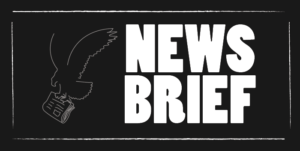
The American Indian Cultural Center and Museum, a $170 million project, sits halfway completed in Oklahoma City, while the state legislature debates how to fund final museum construction.
Construction began in 2005 but stopped in 2012 when funding dried up. The Senate, with support from Gov. Mary Fallin, approved taking $40 million from the state’s Unclaimed Property Fund earlier this year. This amount was to be paired with $40 million already raised in private matching funds to finally complete the project.
State funding was stalled. The House refused a bill that would have given the necessary funds to complete the project.
Meanwhile, the uncompleted museum is costing taxpayers money, a fact that has some Oklahoma residents frustrated.
“The museum is sitting there unfinished, and in the meantime it is recurring utility costs and maintenance while the state government decides on what to do, like how to fund it,” Gary Lindsey, associate professor of history, said.
One senator might have the answer to get the remaining funds needed to complete the construction of the museum.
According to NewsOK, Sen. Patrick Anderson, R-Enid, said he would introduce a bill that would use Indian gaming and tobacco revenue to finish the cultural center.
“We don’t have any tribes in my district, so it’s very difficult for us to accept that we’re going to spend taxpayer dollars for this project if we don’t see a commitment from the tribes as well,” Anderson said. “This would be an acceptable approach for many legislators.”
Lindsey said he agrees with Anderson and believes the Indian gaming and tobacco revenue should use some of its funds to finish the museum.
“It is a cultural museum that is supposed to celebrate Native American history and I think that having the native tribes contribute proceeds from their casinos to finish the museum that seeks to celebrate their culture makes sense,” Lindsey said. “The problem with that is many of the tribes have built their own cultural centers.”
According to Anderson, the state’s general fund, which includes transportation, corrections and education, receives about $28 million per year from Indian gaming and tobacco revenue. Taking money from education, transportation and corrections will mean fewer funds for those needs.
“Sen. Patrick Anderson’s idea to use money gained from the gaming and tobacco revenues I believe that was money already being used for education and transportation and he just diverted it from there,” senior Collin Schnakenberg said. “I am more concerned how it will impact the original plan for that money.”
Although the museum sits halfway finished, Schnakenberg believes it could really benefit all 38 tribes in Oklahoma as they come together as one.
“I don’t think combining the tribes under one museum will take away from individual tribes because usually like the Chickasaw Cultural Center, it is not quite as successful as a museum in Oklahoma City,” Schnakenberg said.
For history professors like Matt McCook, remembering one’s history is important and locals and tourists have a place to remember events from the past.
“It is important to have a museum to remember history because a museum is one of those places outside of a textbook where you can see, feel and touch history and be connected to the past in some way or at least get some idea how life was life for people in distant time,” McCook said.
The museum would not only benefit locals, but if finished, could benefit the country as a whole, Schnakenberg said.
“The museum will give people from all over the country a better understanding of Native Americans history,” Schnakenberg said. “It will give them insight into the Native American culture, which is often overlooked. The Americans with Indian blood are proud of their heritage, but often many of them do not understand what that means, and I think the museum will help with that.”
The lawmakers, however, are only interested in how much revenue the museum would bring and how long before they can see the profits, McCook said.
“I think state legislatures might be a little interested in finishing the museum if they thought it was going to attract people and make money,” McCook said. “They are more interested in how it could make money as a tourist attraction than the actual history or preservation of Native Americans.”
The Oklahoma City American Indian Cultural Center and Museum, if funded soon, is set to open to the public in 2017. However, some remain uncertain if the museum will ever be finished.
“I am kind of skeptical if it will actually be finished now,” McCook said. “Oklahoma is a pretty conservative state it does not want to tax a lot for money and it does not want to spend a lot of money, unless they believe the museum is going to raise Oklahoma’s profile and bring it a lot of profits. I am not opposed to the museum finishing.”













Be First to Comment